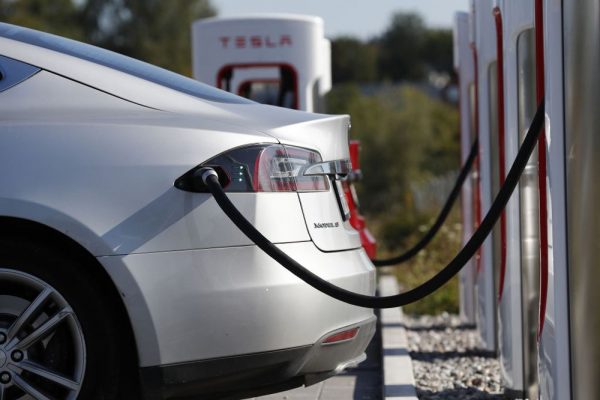The global transition toward battery electric vehicles (BEVs) faces significant challenges in securing a stable supply of essential raw materials. A new report from McKinsey & Company highlights these challenges as the automotive industry works to meet the growing demand for EVs, with global BEV sales projected to surge toward the end of the decade.
By Ryan Chigoche
McKinsey’s analysis predicts BEV demand will grow sixfold by 2030, increasing from 4.5 million vehicles in 2021 to approximately 28 million annually. This rapid growth is expected to create long-term challenges in sourcing critical materials for battery production. As the automotive sector strives to meet net-zero goals, securing these resources will be crucial to maintaining momentum.
A key concern in the report is lithium supply. Currently, battery manufacturers consume over 80% of the world’s lithium—a figure projected to rise to 95% by 2030. As battery technologies shift toward lithium-heavy designs, mining operations will need to scale up significantly. While direct lithium extraction technologies may unlock new sources, McKinsey warns that demand could outpace supply, creating substantial challenges.
Zimbabwe: A Rising Star in the Global Battery Metals Market
Zimbabwe is emerging as a pivotal player in the global battery metals market, thanks to its vast mineral reserves. The country is home to some of the world’s richest lithium deposits in regions such as Bikita, Kamativi, and Mutare. These high-quality lithium-rich pegmatite deposits place Zimbabwe among the top ten global producers of lithium. As demand for lithium-ion batteries grows, fueled by the boom in electric vehicles and renewable energy storage, Zimbabwe’s lithium reserves will play a vital role in meeting global demand.
Beyond lithium, Zimbabwe holds significant nickel reserves, primarily in the Selous and Lalapanzi regions. Nickel is critical for lithium nickel manganese cobalt (LNMC) batteries, widely used in EVs for their stability and high energy density. As the EV industry expands, Zimbabwe’s nickel resources will become increasingly important. McKinsey’s report highlights potential nickel shortages as the battery sector competes with industries like stainless steel for supply. While investments in new nickel mines are underway, McKinsey cautions that without further investments, a slight shortage could occur by 2030.
Zimbabwe also has notable cobalt deposits, primarily as a by-product of nickel and copper mining. While less abundant than in countries like the Democratic Republic of Congo (DRC), Zimbabwe’s cobalt remains valuable. McKinsey projects cobalt demand to grow by 7.5% annually between 2023 and 2030, even as its share in battery chemistries decreases. Supply dynamics, however, may become complex due to price volatility and fluctuations in nickel and copper mining.
High-purity manganese (HPMSM) is another material facing supply challenges. While manganese ore is abundant, producing battery-grade HPMSM requires complex refining processes. McKinsey’s report suggests that only 20% of HPMSM supply may meet battery-grade standards by 2030, potentially exacerbating supply issues for BEV production.
Zimbabwe’s graphite reserves also play a crucial role in the global battery market. Graphite, essential for battery anodes, is abundant in Mashonaland. As global demand for graphite grows, Zimbabwe’s resources will become increasingly vital to the production of electric vehicles and energy storage solutions.
Challenges and Opportunities
Despite its vast mineral wealth, Zimbabwe’s battery metals sector faces several challenges, including policy inconsistencies, infrastructure limitations, and regulatory hurdles. Addressing these obstacles will be critical for the country to capitalize on its mineral resources fully.
However, Zimbabwe’s strategic position, coupled with growing global demand for critical materials such as lithium, nickel, cobalt, and graphite, positions the nation as a key player in the global clean energy transition. Strategic investments, policy reforms, and partnerships could enable Zimbabwe to strengthen its role in the global supply chain for battery materials.
The Global Context
The McKinsey report also emphasizes broader supply chain challenges for critical battery materials. While investments in mining operations, particularly for nickel in Southeast Asia, are underway, McKinsey stresses that continued investment in mining and refining technologies is necessary. Without these investments, supply disruptions, price volatility, and shortages could hinder the transition to EVs and delay progress toward global climate goals.
Zimbabwe’s Potential in the Clean Energy Transition
As the world works toward net-zero emissions and an expanded electric vehicle market, securing a stable supply of critical materials is essential. Zimbabwe’s vast mineral reserves, coupled with strategic investments and a favourable market position, give it the potential to become a central player in the global battery metals supply chain. With the right measures, Zimbabwe can support the global shift toward clean energy while fostering economic growth at home.
.png)




